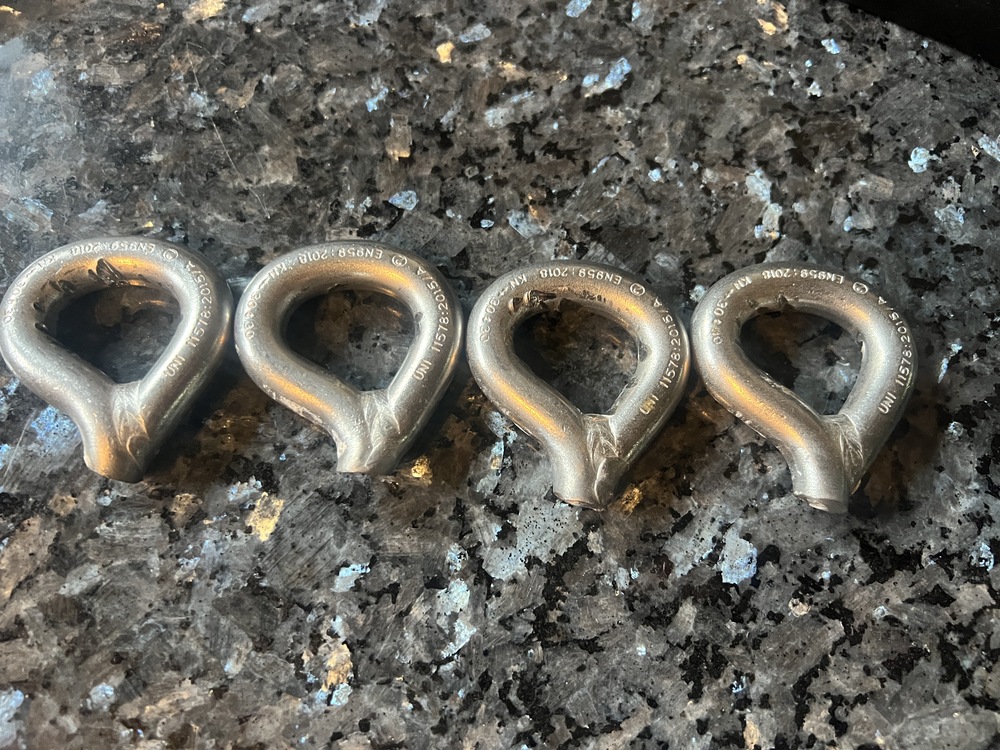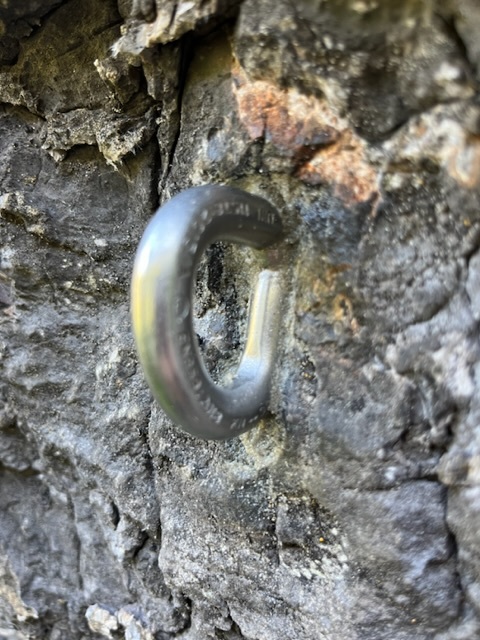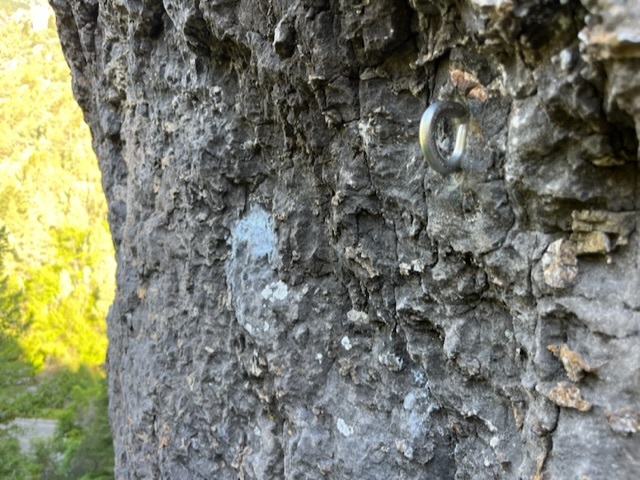To recess or not recess glue-ins?
|
|
Alex Morano wrote: Mountain Mullet for the win! Thanks for sharing, Alex. Now if he redoes the same test with epoxy, I'll be fully satisfied! |
|
|
In case anyone was interested: |
|
|
Interested- please share your details and methodology. |
|
|
Details on previous page brother, just adding the aftermath as I personally love the show, if not more than the tell. |
|
|
I have trasitioned from twist bolts to Bolt-Products 10mm SLBs in hard rock because they will be easilly maintainable in future. An 80mm x 10mm SLB comes right out without damaging the bolt. Easy being relative because the break away torque did require 4ft cheater. Torque reduced after initial movement. I gotta say in hard rock 80mm bolt with a good glue mix is way more than adequate. 120mm seems very overkill to me. |
|
|
I've been watching and learning from all these responses. My attitude is still that notching is overkill... assuming you use a good glue (I use RE-500), and use bolts that have adequate "flats" so they can't be spun out. Notching requires a lot more work, time and materials, which negates much of the cost-savings you might think you're getting from cheaper glue and bolts. |
|
|
But it CAN be so beautiful Now with LOTS of practice, notching and dry fitting SLBs takes about three minutes per hole longer. BUT I also have found that it is better and more efficient for me to drill all the 1/2” holes in a dedicated pass, and then do all the fitting and notching and cleaning in a separate pass… so factor in the extra ascending and descending work and time to facilitate this. Usually in vert or sub-vert I drill up, notch/fit/brush /blow down, and then glue-up. |
|
|
John Byrnes wrote: Can't agree - if there's a weld it needs a notch |
|
|
Jason Hurry wrote: Why do you think that? |
|
|
it needs whatever it says in the installation instructions. that being said I like to see them recess slightly for aesthetics if nothing else. |
|
|
Jim Day wrote: Simply because it spreads the load more evenly over the eye of the bolt rather than at the weld junction |
|
|
Jason Hurry wrote: the weld can handle substantially more load than a human can create....and can handle up to MBS at minimum. |
|
|
Mr Rogers wrote: I don't think a notch/ glue does anything at all to help spread load away from the weld in tension or shear! Only rotational torque (which should be negligible in climbing falls) would it help, and even then, if the force is strong enough to deform 10mm steel rod, it's probably going to flake away a little rock and glue with almost no resistance. And break your bones |
|
|
Nick Goldsmith wrote: If you recess a Bolt Products SLB then you are not following the installation instructions |
|
|
Jason Hurry wrote: According to my professional Welding Metallurgist, who is also a climber and helped design the Tortuga Ti bolt, a good weld is usually stronger that the rod material itself. Also, the eye of the bolt is both expected and intended to flex during loading, distributing the force evenly. Recessing the eye actually focuses the forces by not allowing the eye to flex naturally. In addition, all the bolts we use for climbing are far stronger than the forces we place on them, whether recessed or not, assuming they are well set. So unless the bolt you are using can be screwed out, recessing is a waste of time, materials and battery life, as well as being harder to make a clean and neat placement that is easily clipped and doesn't cause cross-loading. |
|
|
According to the instructions from Raumer (P-shaped bolts): For "BICOMPONENT EPOXY RESIN PACKAGED IN CARTRIDGES", it is "...it is (almost) always recommended to also make a groove in line with the desired load." But for "SYNTHETIC ACYRLATE RESIN PREDOSED IN GLASS PHIALS", "...for obvious reasons, this system can not use the groove method..." So it seems like the instructions are saying, in effect, "groove if you can, but no big deal if you can't". And to wax perhaps excessively pedantic, "recommended" does not mean "must" or "required". Could be a translation artifact though, the original text is Italian. |
|
|
Derek Woods wrote: Thanks Derek, I also made the point about raumer not requiring to notch for glass phials at the start of this thread. I've heard that the glue in glass phials is stronger than vinyl ester and pure epoxy, but not sure if that's true. If it is, I think that further supports using quality pure-epoxy if not notching |
|
|
Glass vials lack the necessary volume of adhesive to support notching because they were never designed for use with rock climbing anchors. The majority of glass vials contain vinyl ester compositions. |
|
|
Francis Haden wrote: European certification / conformity does not require anchor notching. Thanks Francis, for reminding me about rope traps. My opinion is that the bolt design should mitigate this, regardless of notching. Just as mechanical bolt hangers have a slope on the upper edge to shed the rope, glue-in bolts should have a similar shape. In general "P" shaped bolts are superior in this regard to other available shapes. CAVEAT: on a slab, rope traps are more of a problem, and notching does seem like a good option to me. |
|
|
Honestly John B, I think you have me convinced and in agreement with the sub-vert notching and forgoing other angles…regardless of my preference for the aesthetics of the properly notched SLBs. I plan to switch to exclusively pure epoxy and no notching for future SLB’s after I burn through the Raumers and AC-100 I have on hand. Good thread everyone |

 Continue with onX Maps
Continue with onX Maps Sign in with Facebook
Sign in with Facebook

























